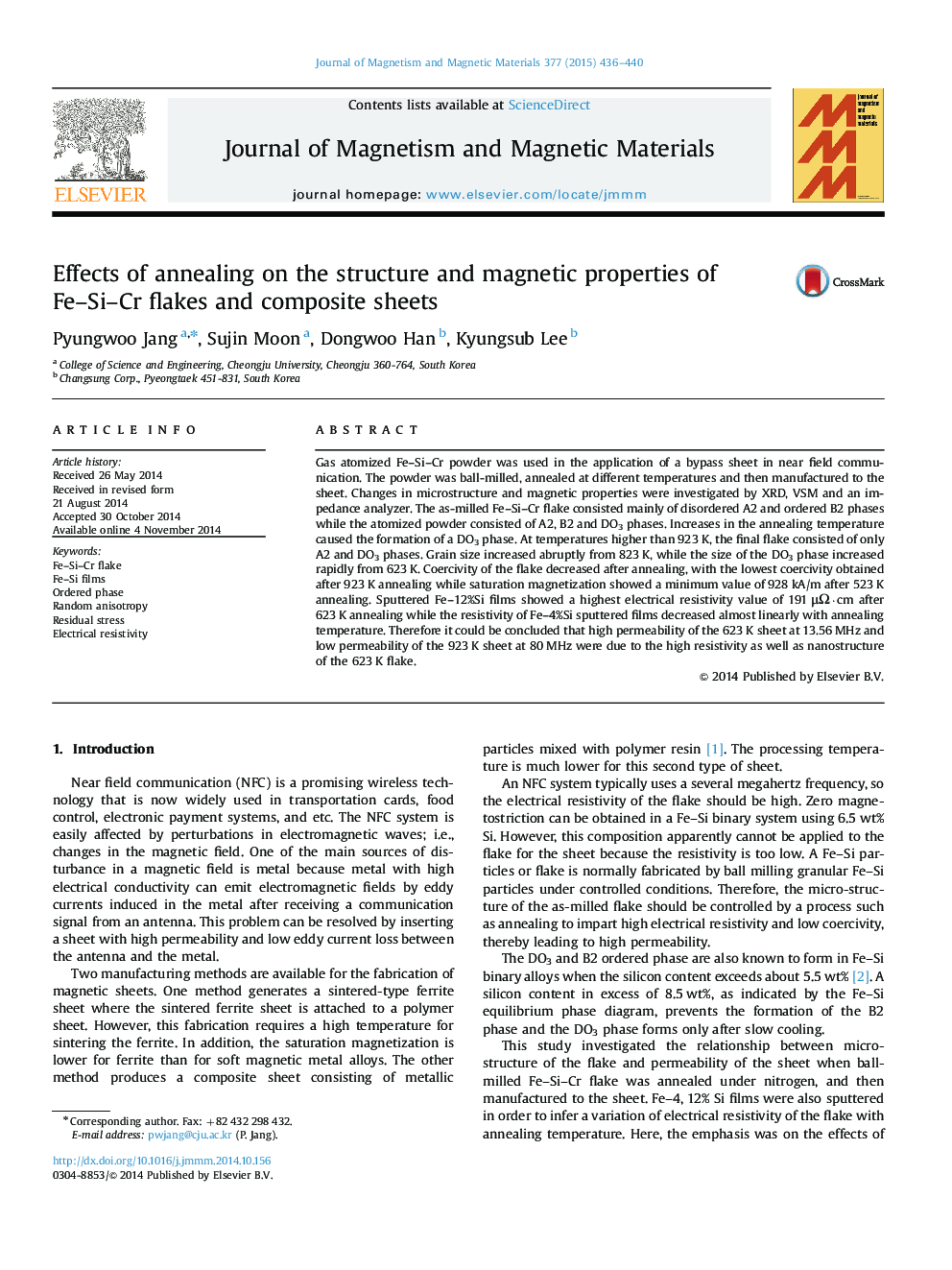| Article ID | Journal | Published Year | Pages | File Type |
|---|---|---|---|---|
| 8156352 | Journal of Magnetism and Magnetic Materials | 2015 | 5 Pages |
Abstract
Gas atomized Fe-Si-Cr powder was used in the application of a bypass sheet in near field communication. The powder was ball-milled, annealed at different temperatures and then manufactured to the sheet. Changes in microstructure and magnetic properties were investigated by XRD, VSM and an impedance analyzer. The as-milled Fe-Si-Cr flake consisted mainly of disordered A2 and ordered B2 phases while the atomized powder consisted of A2, B2 and DO3 phases. Increases in the annealing temperature caused the formation of a DO3 phase. At temperatures higher than 923 K, the final flake consisted of only A2 and DO3 phases. Grain size increased abruptly from 823 K, while the size of the DO3 phase increased rapidly from 623 K. Coercivity of the flake decreased after annealing, with the lowest coercivity obtained after 923 K annealing while saturation magnetization showed a minimum value of 928 kA/m after 523 K annealing. Sputtered Fe-12%Si films showed a highest electrical resistivity value of 191 μΩ·cm after 623 K annealing while the resistivity of Fe-4%Si sputtered films decreased almost linearly with annealing temperature. Therefore it could be concluded that high permeability of the 623 K sheet at 13.56 MHz and low permeability of the 923 K sheet at 80 MHz were due to the high resistivity as well as nanostructure of the 623 K flake.
Related Topics
Physical Sciences and Engineering
Physics and Astronomy
Condensed Matter Physics
Authors
Pyungwoo Jang, Sujin Moon, Dongwoo Han, Kyungsub Lee,
